Editor’s Note: As of February 2024, the Misinformation Monitor is now Reality Check, a weekly newsletter on misinformation and media online. Learn more and subscribe here on Substack.
Misinformation Whack-A-Mole: The Next Chapter In The Russia-Ukraine Misinformation War
How Chinese State-Run Facebook Pages Have Served as Megaphones for Russian Disinformation About the War in Ukraine
By Lorenzo Arvanitis and Kendrick McDonald
With more than half a billion followers on Facebook, Chinese state-run news organizations have persistently spread Russian disinformation narratives since the invasion of Ukraine, according to an analysis by NewsGuard. These organizations, which are controlled by the Chinese government, have massive Facebook audiences that are many times greater than those of Western outlets, even though the social media platform is blocked in China — meaning that their massive audiences are located throughout the rest of the world, where they read this propaganda in their native languages.
The English-language Facebook page of the Chinese state television broadcaster CGTN has 117 million followers. Its French-language counterpart, CGTN Français, has 20 million followers. China Daily and The Global Times, both English-language Chinese newspapers, have 104 million and 67 million Facebook followers, respectively. For context, NPR has fewer than 8 million followers, and The Daily Mail, which is consistently one of the most engaged publications on the platform, has 21.7 million followers.

By far the most prominent narrative pushed by these sources has been that the U.S. operates biological labs in Ukraine that are developing bioweapons — a claim that the Kremlin has repeatedly used to justify its invasion of Ukraine.
Since Feb. 24, 2022, NewsGuard identified 74 English-language posts on Chinese state media Facebook accounts (including videos, articles, and cartoons) that mentioned biolabs, including one from the state-run news agency Xinhua, which re-posted a video from March 10 of the Russian Defense Ministry spokesperson Igor Konashenkov claiming that a “bat coronavirus” was found in a U.S.-backed bioweapons lab in Ukraine. “The purpose of these and other Pentagon-funded biological researches [sic] in Ukraine was the creation of [a] mechanism for the covert spread of deadliest pathogens,” Konashenkov said in the video. The post had received approximately 21,300 interactions, and was shared 6,400 times as of April 20, 2022.
Although that post included a Facebook fact-checking notice flagging the post for “partly false information” and linking to a fact-checking article, many others did not. For example, many unflagged posts also stated as fact that the U.S. owned or operated biological laboratories in Ukraine, which the U.S. Department of State has repeatedly denied. Other posts uncritically repeated the Kremlin’s claims that these labs were building bioweapons.
In fact, scientists say that the bat research that took place in Ukrainian laboratories constituted “very basic epidemiological research,” according to Science magazine. Moreover, there is no evidence that this research — or any research that occurred in these laboratories — was used to develop biological weapons.

In addition to propagating falsehoods about Ukraine’s biolabs, other posts from China repeated the Kremlin’s propaganda that Russian troops were not responsible for civilian killings in Bucha, Ukraine, and the bombing of Mariupol’s maternity hospital. (NewsGuard has debunked top war-related myths on the Russia-Ukraine Disinformation Tracking Center.)
Misinformation about the conflict was not unique to the Chinese outlets’ English-language Facebook pages. NewsGuard also identified multiple posts about the bioweapons labs on their French- and Italian-language counterparts.
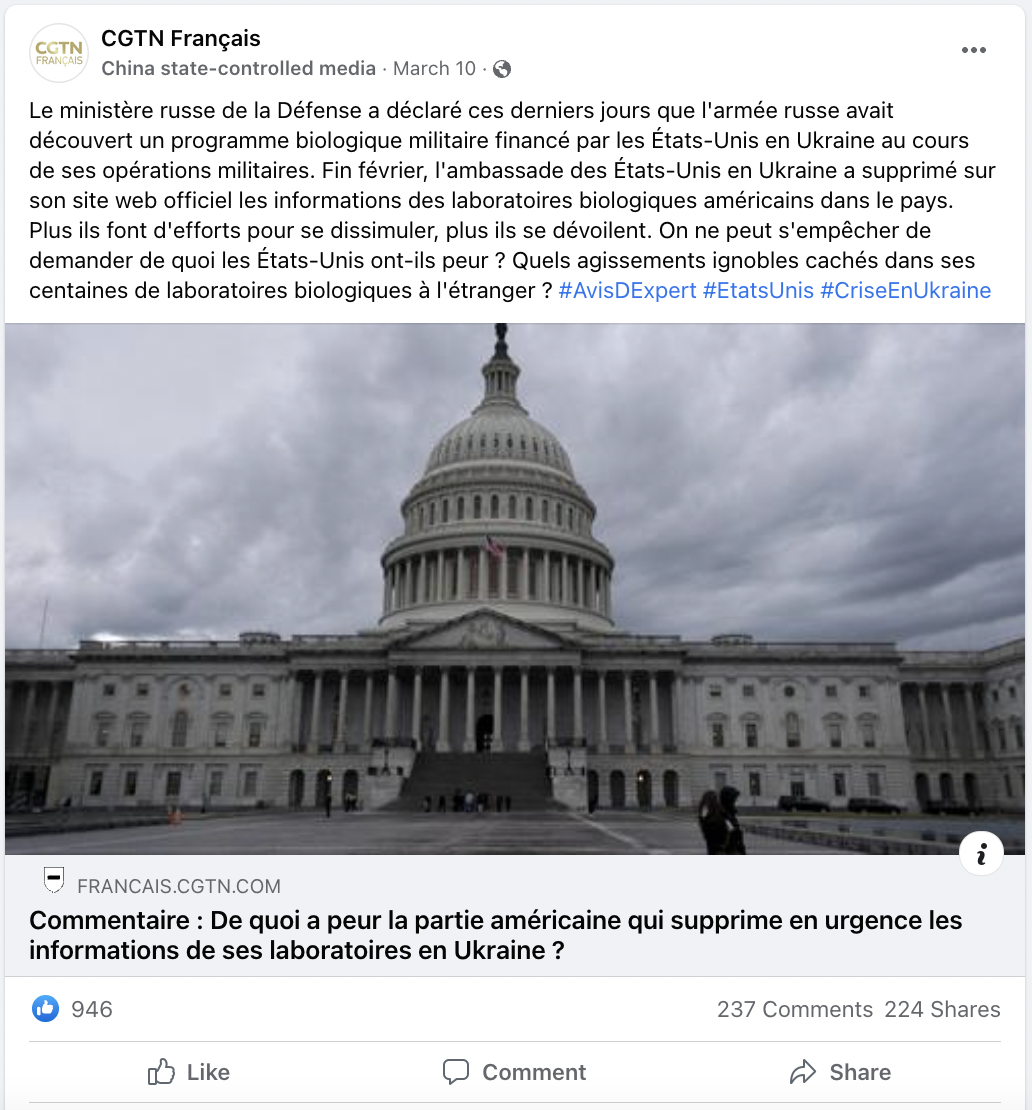
For example, the French-language page CGTN Français uncritically repeated the Russian Defense Ministry’s accusation about a biological military program funded by the U.S. in Ukraine (“un programme biologique militaire financé par les États-Unis en Ukraine”). The page also claimed that the U.S. embassy in Ukraine had deleted information about Ukraine’s biolabs from its website, which is false.
Similarly, the Italian-language page of China Radio International, China’s state-owned international radio broadcaster, posted an article titled “Ukraine Crisis: Why Hide Traces of a US-Funded Biological Warfare Program?” (“Crisi in Ucraina: perché nascondere le tracce di un programma di guerra biologica finanziato dagli USA?”). The article claimed without evidence that “even some U.S. scientists confirm that the Pentagon laboratory is starting research on biological weapons” (“Anche alcuni scienziati statunitensi confermano che il laboratorio del Pentagono sta avviando una ricerca sulle armi biologiche”).
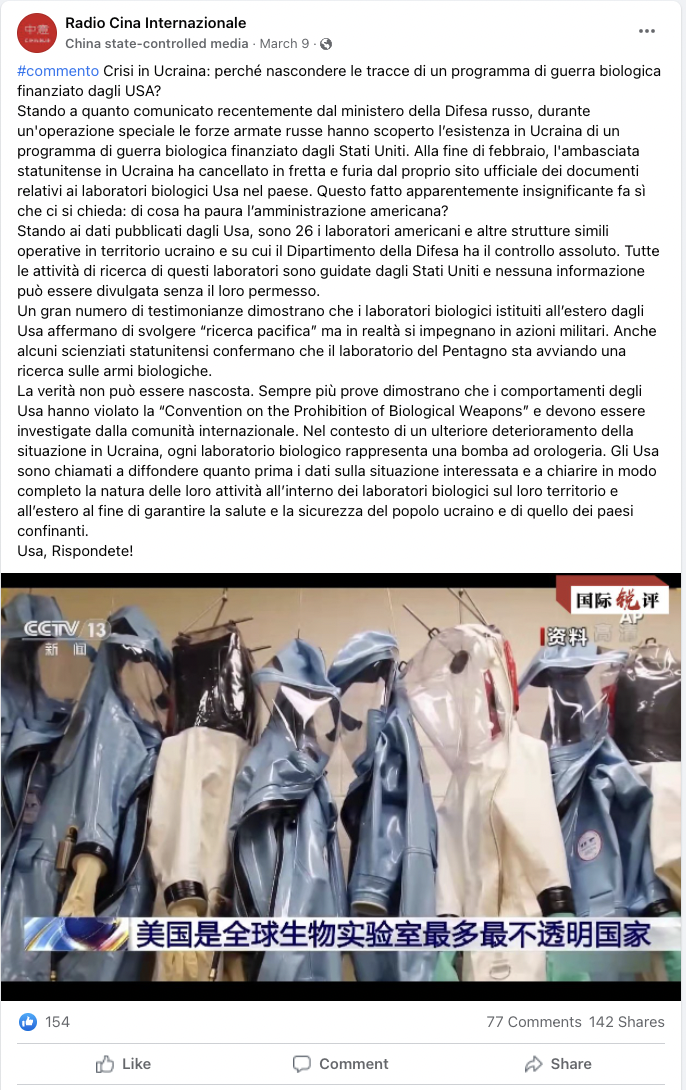

Inside Russia’s Propaganda Machine: Two Weeks of State TV’s Upside-Down War Coverage
From April 11 through April 22, there was no mention of deaths in the Russian military. The word “war” was not uttered. In the story told by the Russian state TV, Russian soldiers were victorious “defenders”, the Ukrainians were “Nazis” and the West’s military support for Ukraine was hypocritical and pointless.
Since April 11, 2022, NewsGuard has been translating and summarizing the 9 am news program on the state-run Channel One (“Pervy Kanal”), Russia’s most widely watched TV news channel, according to a 2018 survey by the independent Moscow-based pollster, the Levada Center. (NewsGuard has debunked top war-related myths on the Russia-Ukraine Disinformation Tracking Center.)
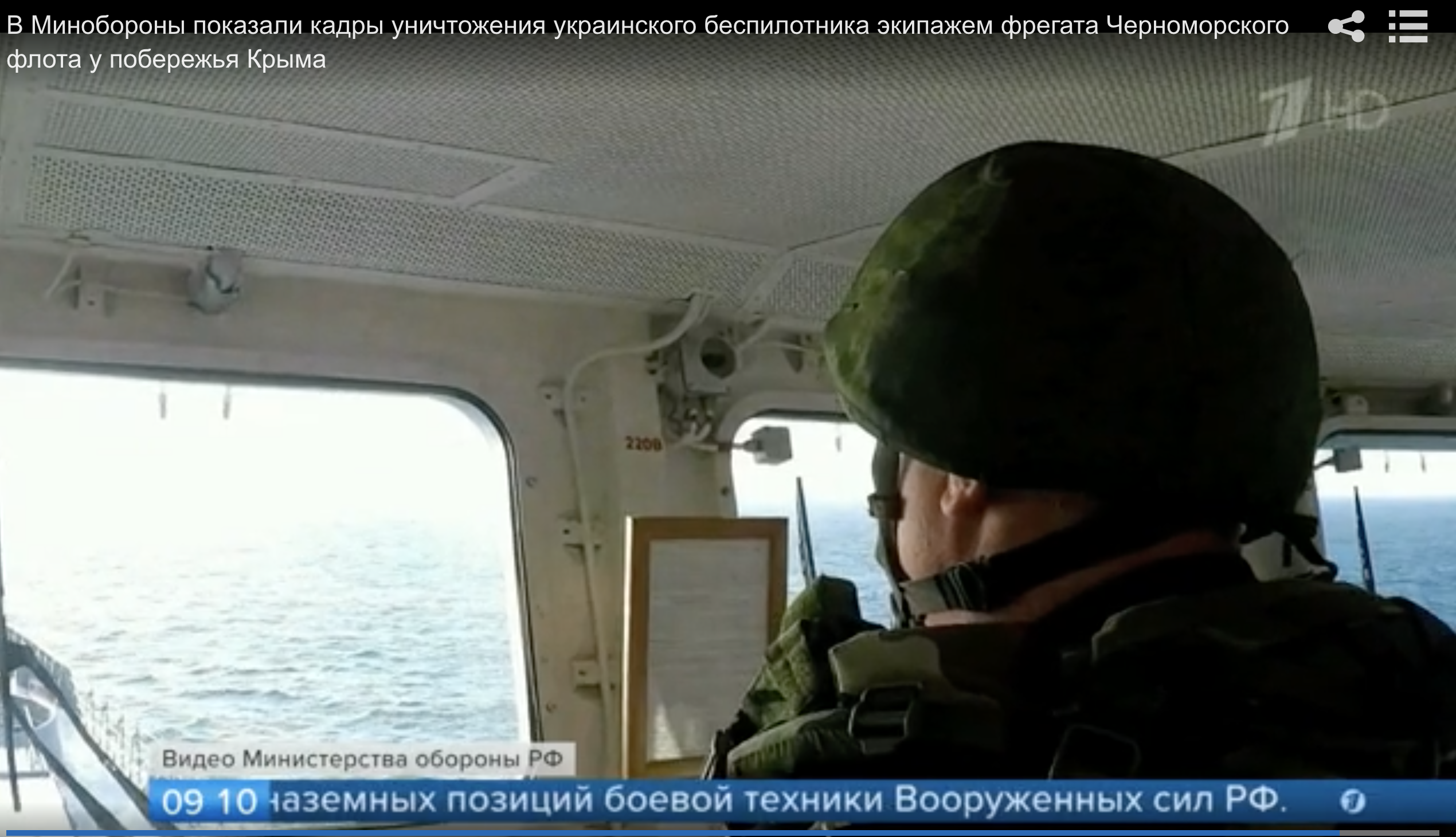
Channel One’s morning programs between Monday, April 11, 2022, and Friday April 22, 2022, featured 65 stories about the Russia-Ukraine war. Coverage was largely focused on four themes: the heroism and strength of the Russian army, the aggression of the Ukrainian army, Russia’s humanitarian assistance to Ukrainians, and Western military aid to Ukraine.
- Twenty-six stories focused on Ukrainian “planned provocations” and attacks against civilians. Claims included that Ukrainian “neo-Nazis” and “bandits” “indiscriminately attacked” civilians and planned “provocations” in order to blame Russia. The newscast claimed that the “terrible truth about the atrocities of the radicals” was “drowning in a stream of lies,” adding that “In the West, it is somehow not customary to talk about this.”
- Sixteen stories were about the “heroism” and “strength” of the Russian military. Claims included that the Russian army managed to thwart Ukrainian offensives, even in battles where the enemy had superior capabilities, and that the Russian military neutralized bombs belonging to the “nationalists” and “radicals.” The channel regularly publicized the names of “new heroes,” who “courageously” carried out their duties.
- Nine stories highlighted Russia’s humanitarian assistance to Ukrainians. The channel reported that Russia was helping “restore normal life” in areas that it had “liberated” by supplying essential items, and was welcoming refugees to Russia.
- Five stories focused on the West’s military assistance in Ukraine. The channel repeatedly claimed that the weapons that the West was “pumping” into Ukraine were ending up in the hands of Ukrainian “gangs,” only to be “abandoned” during their retreats. One story said: “Its rhetoric calls for peace, its actions incite war. Such is the contradictory West, ready to pump Ukraine with new weapons without stopping.”
- Topics covered in other stories included a segment about how Russian companies were making sanctions “work in their favor.” Another segment focused on an article by The New York Times, which reported that the Ukrainian army had apparently used banned cluster bombs on its territory in early March. Channel One said: “While the American authorities are fueling the situation by pumping weapons to Ukraine, their media has suddenly begun to see clearly.” (During this two-week period, NewsGuard did not see any other references in the 9 am newscasts to reporting by The New York Times, which has reported extensively on civilian casualties and accusations that Russia is committing war crimes.)
- Stories on Channel One also drew parallels between today’s Ukraine and Nazis during World War II, or “The Great Patriotic War” as it is known in Russia. One segment reported on the Russian Defense Ministry launching a portal about the 1943 liberation of Mariupol, Ukraine. Channel One said: “Particular attention is paid to award lists and descriptions of the feats of Red Army soldiers. There is special section about falsehoods created by the Nazis. The Ministry of Defense notes that their current Ukrainian followers use all the same criminal methods.”
- It is noteworthy that news about the April 14, 2022, sinking of the Moskva warship on the Black Sea appeared toward the end of the news program on April 15, 2022. The sinking of the vessel was widely seen as a major setback to Russia’s invasion, and Ukraine has said that it sunk the ship with a missile and claimed that all 510 aboard died. (These claims have not been independently verified as of April 25, 2022.) However, Channel One downplayed the incident and said that the ship was damaged by ammunition exploding onboard and “sank during a storm.” The entire crew was evacuated to other ships, Channel One said during another program.
Eighty-five percent of Russians get their news from state TV, according to a 2018 poll by the Levada Center. On March 4, less than two weeks after the invasion began, the Kremlin passed a law punishing purveyors of “fake news” with up to 15 years in prison. The same day, the Russia state media regulator Roskomnadzor blocked access to BBC, Deutsche Welle, and other foreign news sites.
With the Kremlin tightening its grip over the media, the official narrative is now more likely than ever able to go unchallenged.
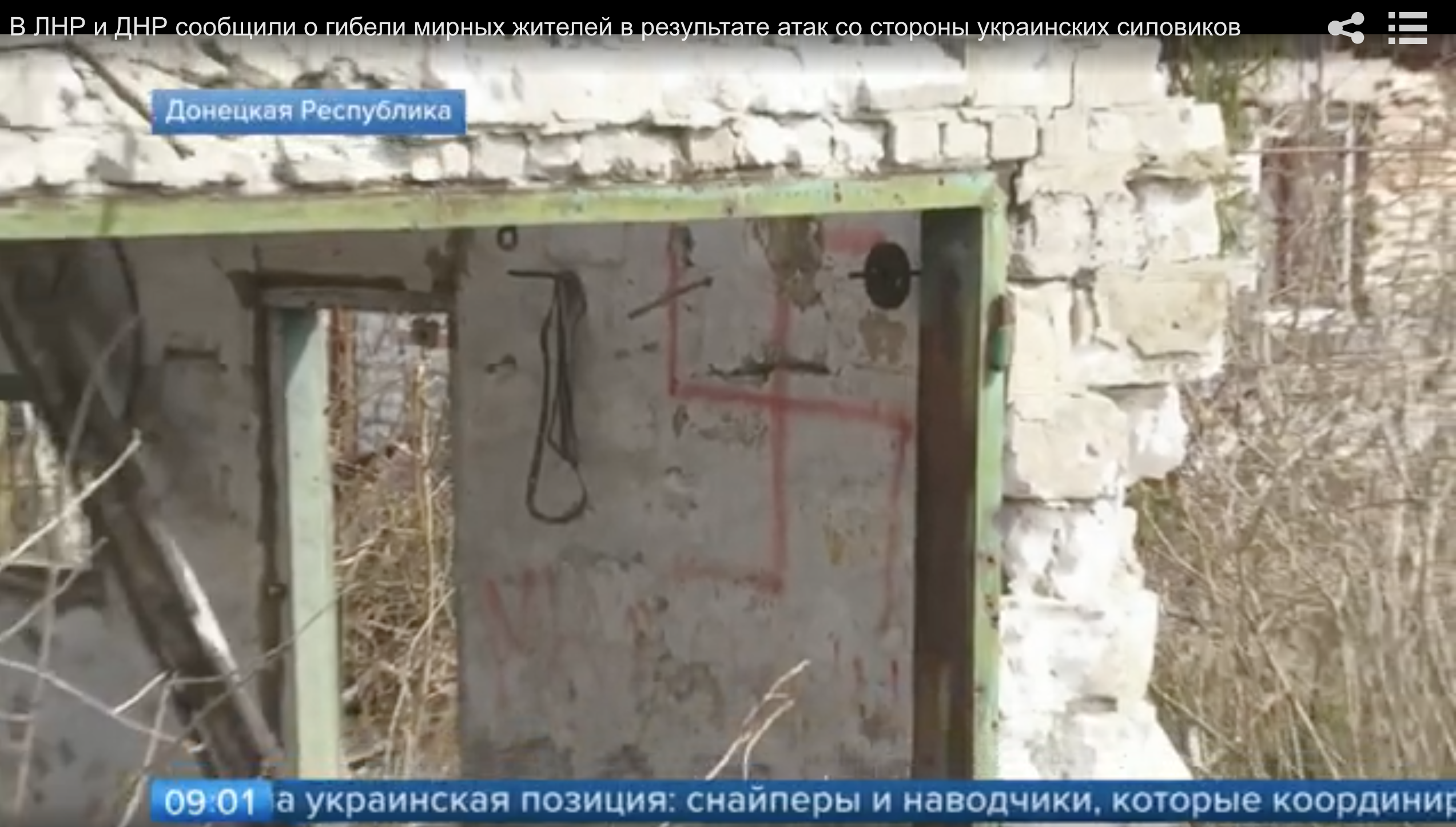
More Whack-a-Mole: Filling RT and Sputnik’s Void, Russia-Friendly Countries Use YouTube to Push Misinformation About the War, with Huge Reach
By Jack Brewster, Lorenzo Arvanitis, and Chiara Vercellone
YouTube is banned in China and periodically censored in Venezuela, but that has not stopped Chinese and Venezuelan state-sponsored media outlets from using the U.S.-based video platform to spread disinformation about the war in Ukraine in English around the globe, a NewsGuard investigation has found.
NewsGuard’s findings highlight how YouTube’s lax moderation practices have led to a game of misinformation whack-a-mole. After news outlets reported extensively on the proliferation of pro-Russian disinformation from Russian state-funded media outlets, the European Commission, in March, required that digital platforms take action against Russian government-operated news sites, referring to RT and Sputnik News. On March 11, 2022, YouTube blocked its distribution of Russia-controlled media companies RT and Sputnik globally and promised to crack down on war-related content “denying, minimizing, or trivializing well-documented violent events.” But NewsGuard’s investigation found that state-sponsored media outlets in China and Venezuela, as well as Belarus, have easily circumvented YouTube’s crackdown and filled the void once occupied by the Russian channels.
In April 2022, NewsGuard searched the YouTube channels in English of 10 state-sponsored media outlets from China, Venezuela, and Belarus for pro-Russian disinformation about the conflict in Ukraine. Many of the channels have large audiences, such as the China-based channels China Global Television Network and New China TV, which have 2.79 million and 1.28 million global YouTube subscribers, respectively (YouTube does not provide public data about the geographic location of subscribers).
Falsehoods peddled by the state-run media outlets included:
- The false claim that the U.S. has bioweapon laboratories in Ukraine
- The false claim that the massacre of civilians in Bucha, Ukraine, was staged
- The false claim that Vladimir Putin and Russia are not the aggressors in this conflict
- The false claim that the 2014 Ukraine Maidan Revolution was a coup staged by the U.S.
- The false claim that Ukrainian politics and society are dominated by Nazi ideology
- The false claim that Ukraine uses civilians as a human shield
- The false claim that Russia does not use the type of missile that was employed to attack the Kramatorsk train station
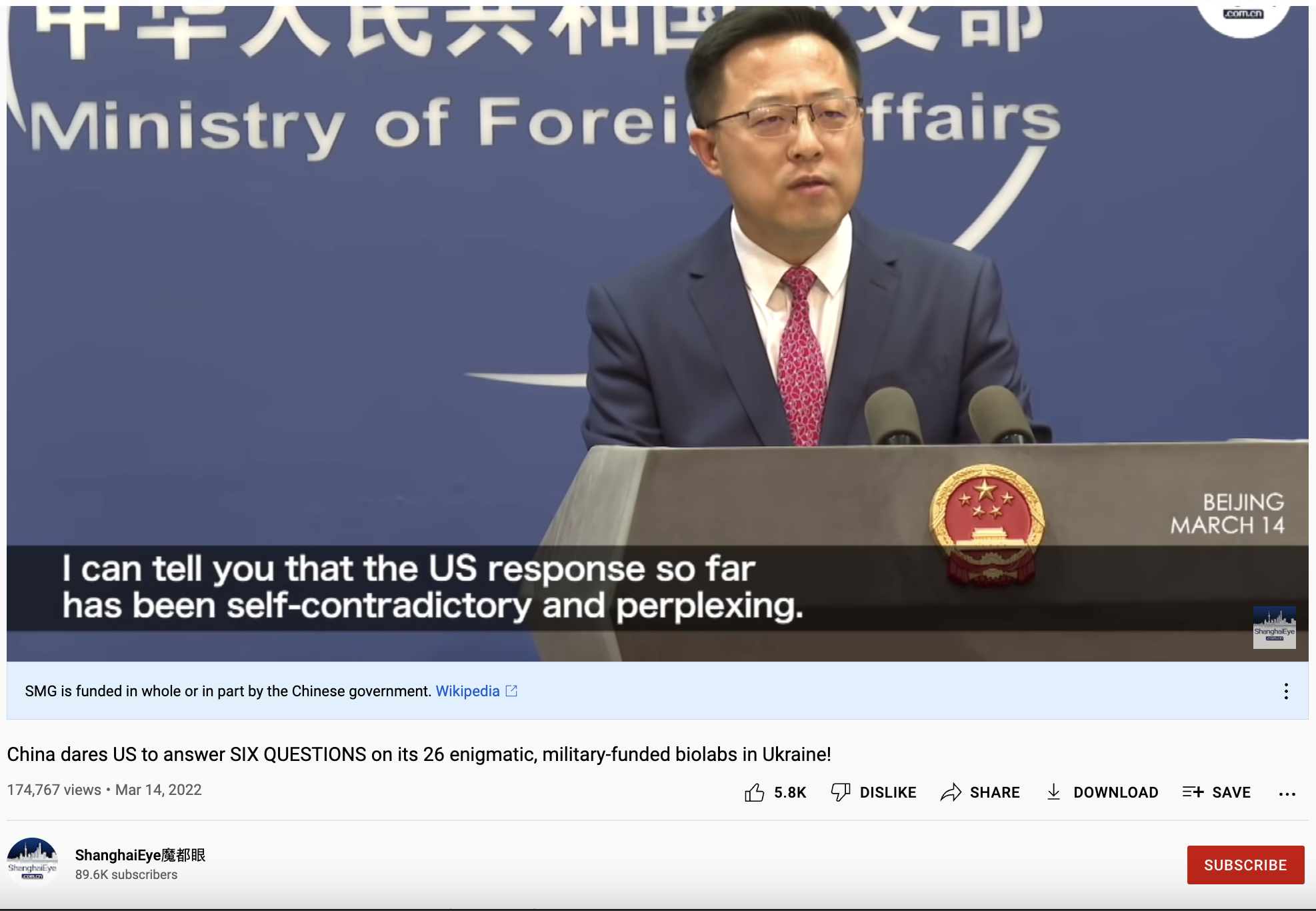
NewsGuard’s investigation highlighted how YouTube is still being used as a tool: China and Venezuela block, censor, and temporarily restrict the platform at home, only to push disinformation to a willing public abroad. To be clear, YouTube is still generally accessible in Venezuela, but the Venezuelan government has blocked access to it in the past. And although the platform is blocked across mainland China, people in Hong Kong and Macau can still access it. People in Venezuela and China can also get around internet restrictions by using a virtual private network (VPN).
NewsGuard identified 43 videos from state-run outlets in China, Venezuela, and Belarus spreading disinformation about the war. Taken together, the videos had garnered approximately 2.2 million views as of April 20, 2022.
Despite the Chinese government’s efforts to portray itself as neutral in the Russia-Ukraine war, the overwhelming majority (77 percent) of YouTube videos containing disinformation identified by NewsGuard came from China state-run outlets.
For example, after Russia’s Feb. 24, 2022, invasion of Ukraine, the channel of a Shanghai-based state media outlet Shanghai Eye posted videos accusing the U.S. of operating “enigmatic” biological labs in Ukraine and urging the U.S. to “offer a clear account of its biological military activities at home and abroad.” Other videos denied that Russian troops were responsible for the massacre of civilians in the Ukrainian town of Bucha.
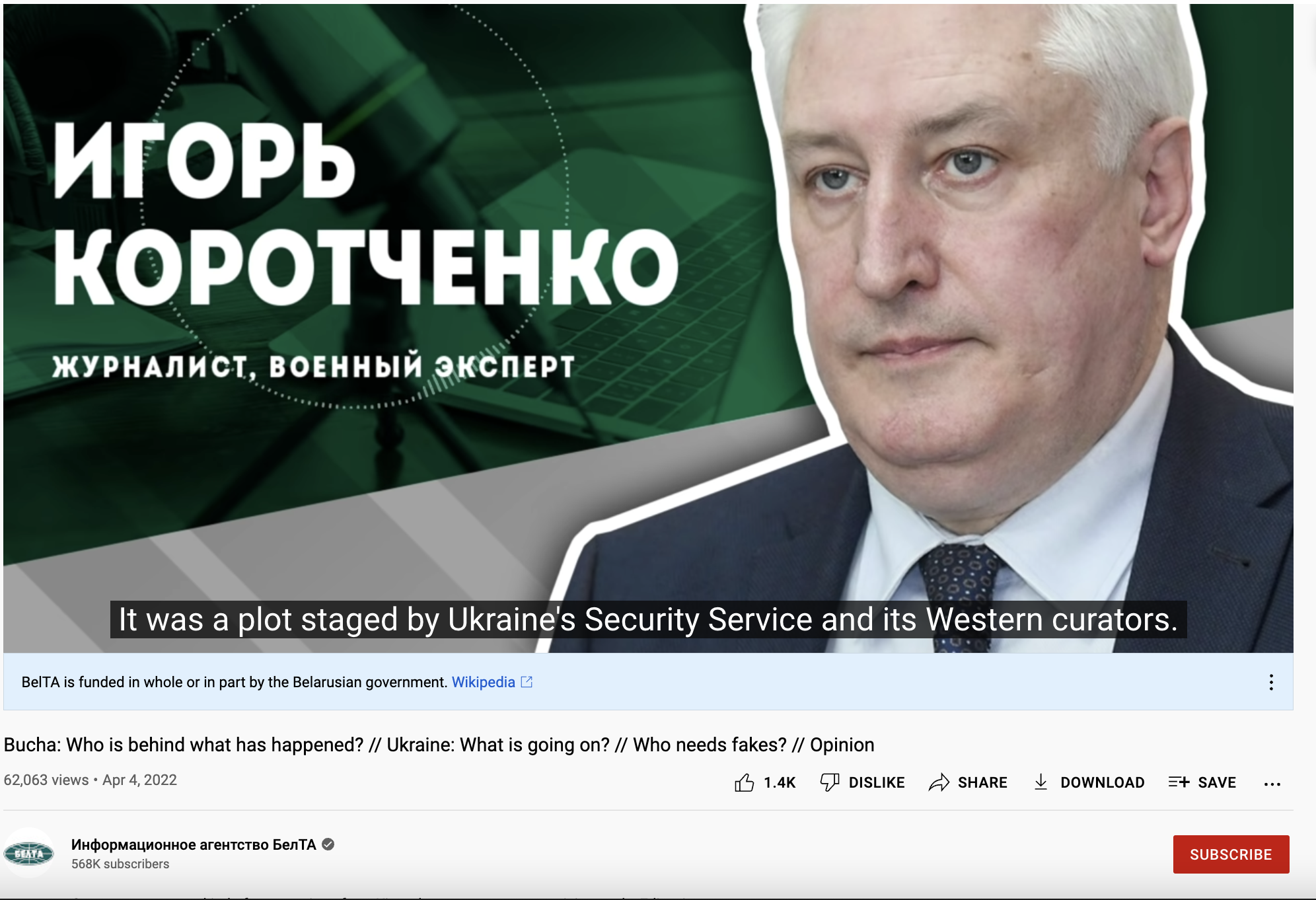
These videos together accrued approximately 577,000 views. NewsGuard analysts found 25 other videos across state-run news outlets based in China and Venezuela pushing false claims about U.S.-run bioweapon or biological laboratories in Ukraine.
The channel of the Venezuelan state-funded television network TeleSUR posted multiple videos uncritically repeating the Kremlin’s disinformation narratives about the killing of Ukrainian civilians in Bucha being “staged” and “fake.” The Belarussian state outlet Belarusian Telegraph Agency falsely argued that the Bucha killings were staged, in an effort to pit the West against Russia.
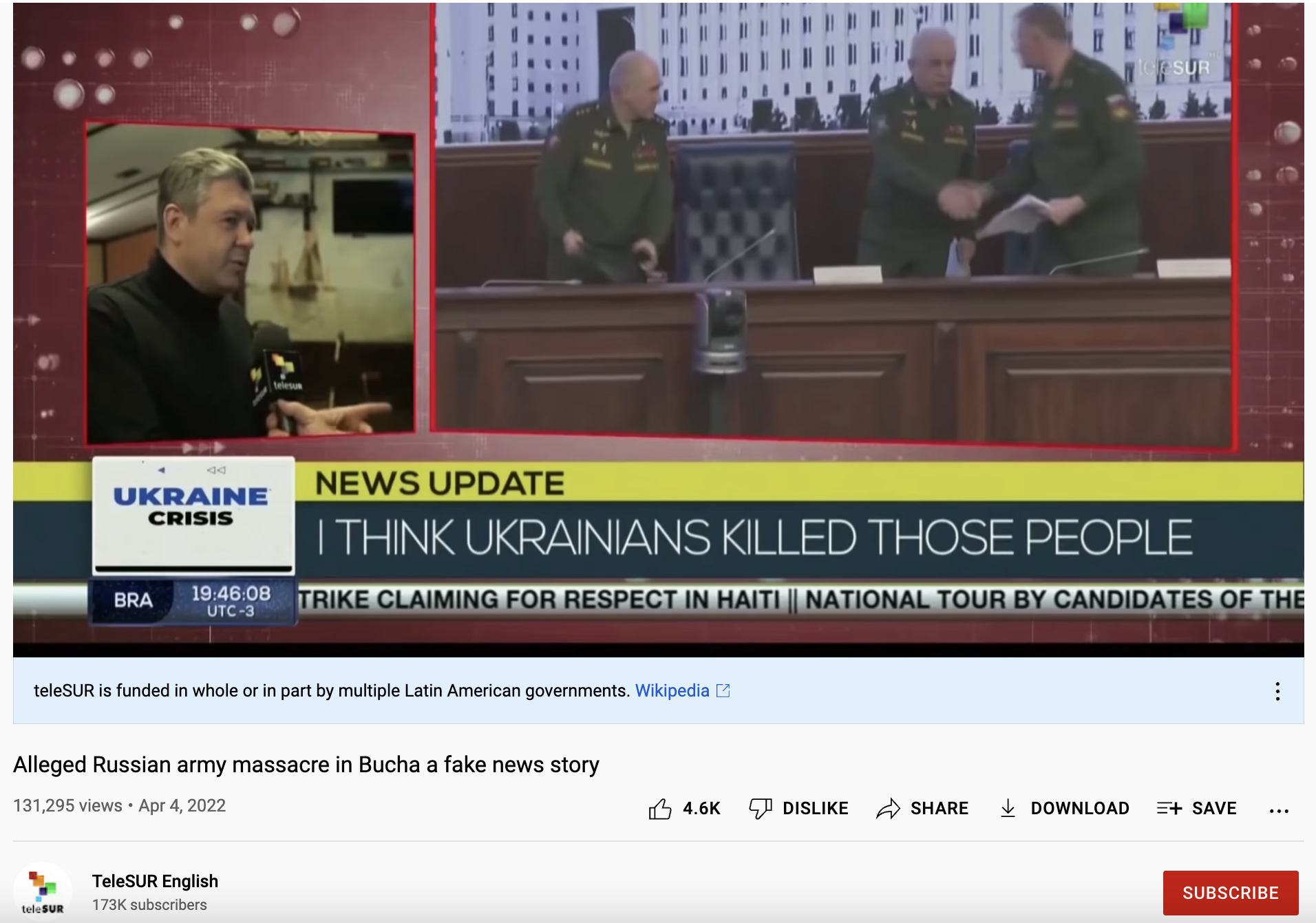
In addition to spreading false narratives, many of the channels employed Russian rhetoric, such as downplaying the gravity of the conflict by referring to the war as a “situation,” “special operation,” or “issue.” Other videos put Russia’s false claim that the massacre of civilians in Bucha was staged on equal footing with overwhelming evidence that the massacre did occur.
Announcing its RT and Sputnik ban on March 11, 2022, YouTube promised to block access to “channels associated with Russian state-funded media globally.” However, that move has clearly left space for other bad actors to fill the breach.
Methodology:
NewsGuard analysts conducted searches using ten keywords (“Bucha,” “bioweapons,” “biolabs,” “Mariupol,” “Nazi,” “Donbas genocide,” “U.S. coup,” “Kramatorsk train station,” “Ukraine,” and “Russia”) on the channels of 10 state-controlled media outlets.
Send us ideas or questions.